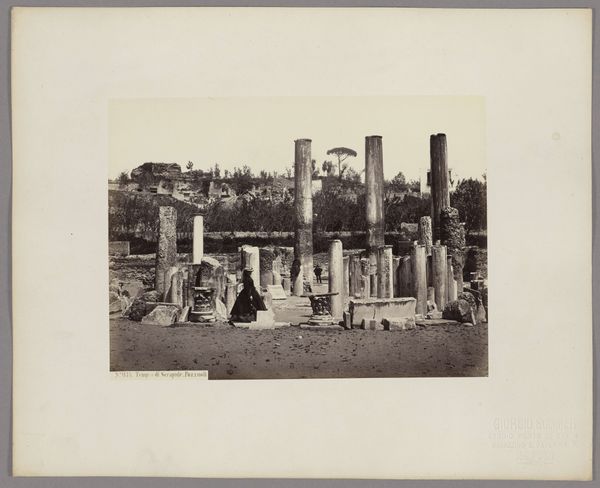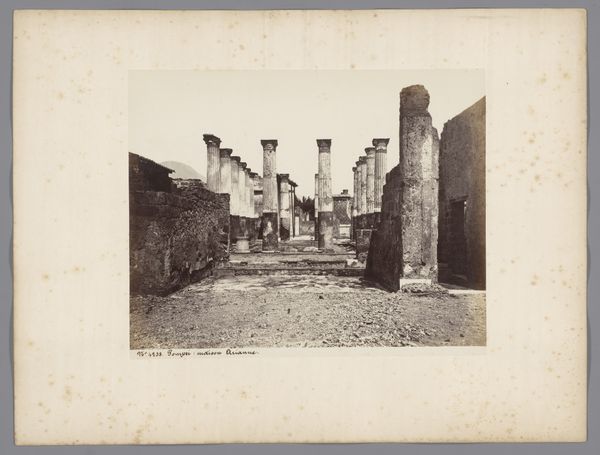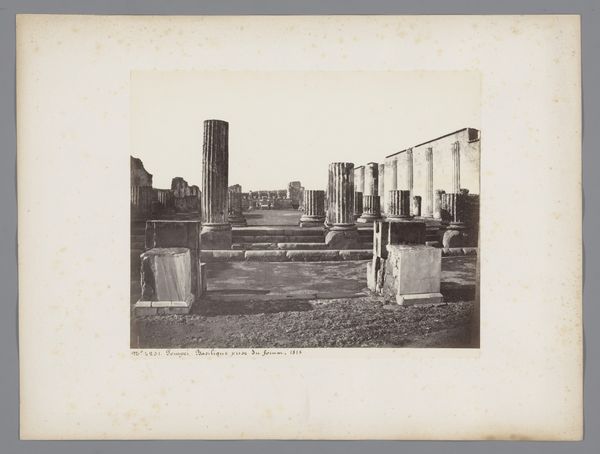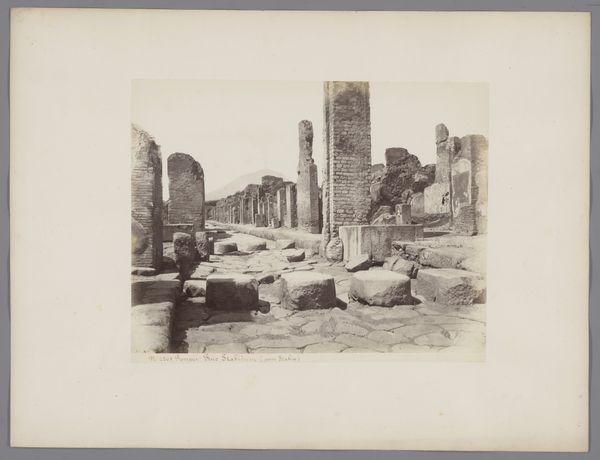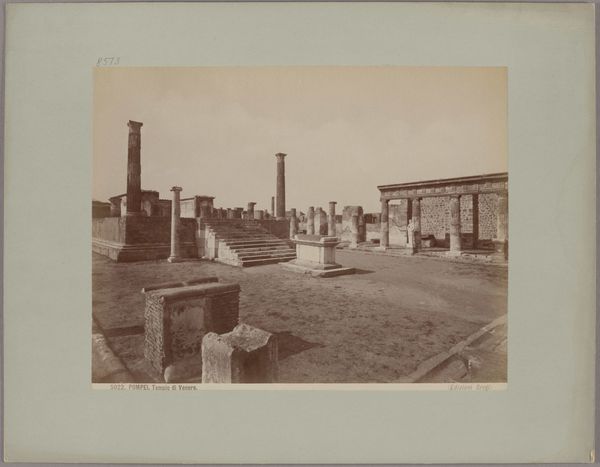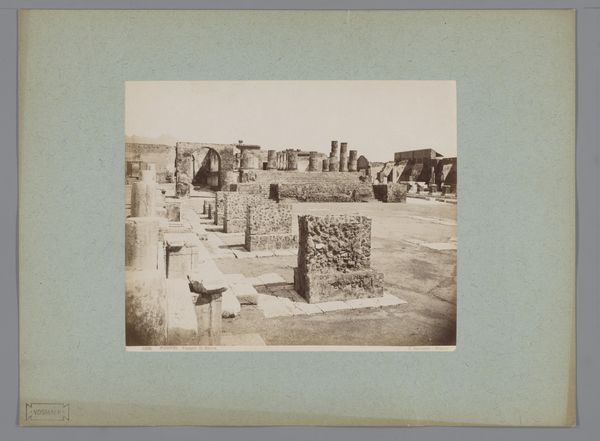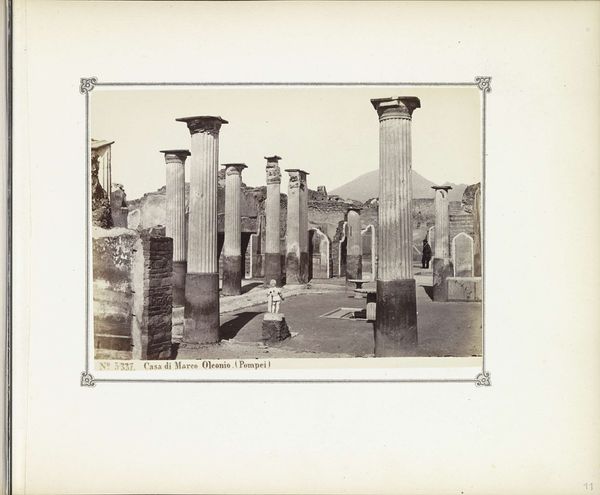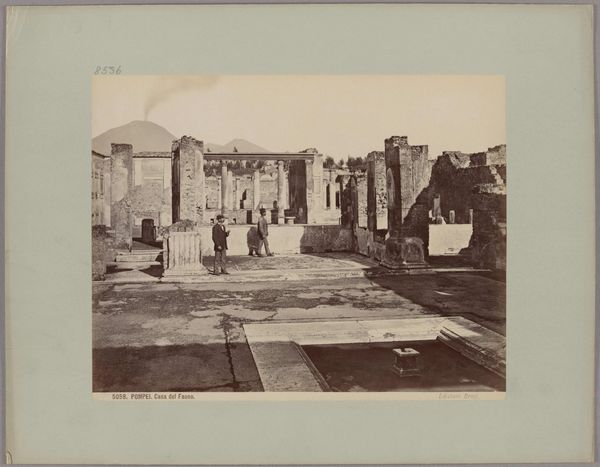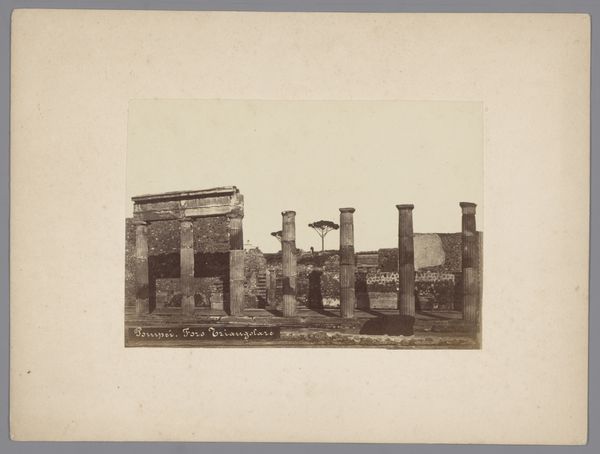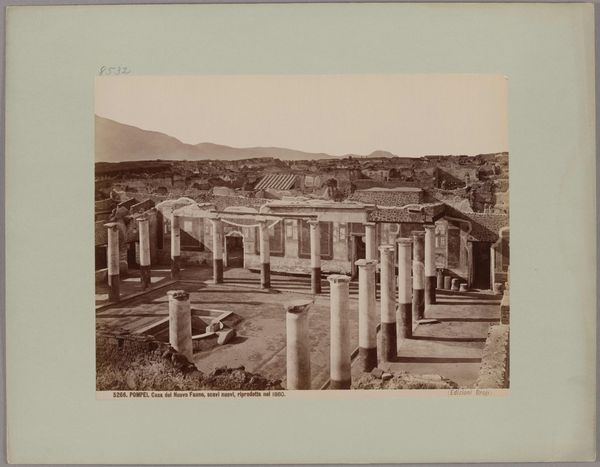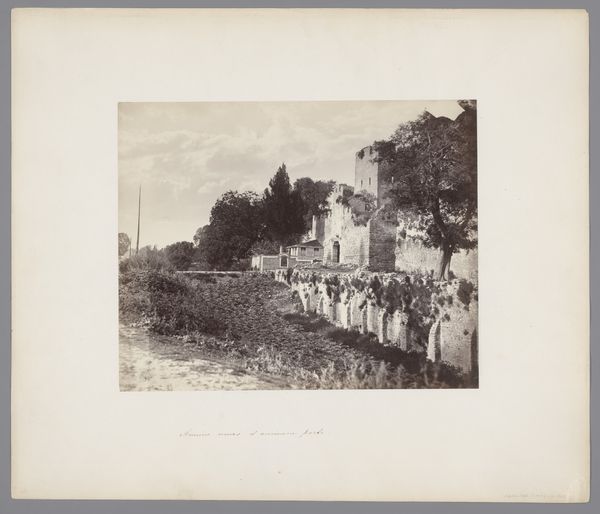
albumen-print, photography, albumen-print, architecture
#
albumen-print
#
16_19th-century
#
pale palette
#
landscape
#
classical-realism
#
photography
#
ancient-mediterranean
#
cityscape
#
italian-renaissance
#
italy
#
albumen-print
#
architecture
#
realism
Copyright: Public Domain
Giorgio Sommer created this albumen print of the Temple of Serapis in Pozzuoli, Italy, some time in the mid-19th century. It was a time when photography was increasingly used to document archaeological sites and monuments. This particular image is interesting because it captures the ruins of the temple, which was dedicated to the Egyptian god Serapis, but also, the way in which it seems to frame the figure of the woman in the foreground. This is not a straightforward record; it's a cultural interpretation. Sommer’s work reflects the 19th-century fascination with classical antiquity and the rise of tourism. It also reflects the use of photography as a scientific tool but its transformation into a form of artistic expression. To fully understand the image, we might look at publications of the time, records of archaeological expeditions, and other photographs of the site. The Temple of Serapis became a popular attraction in the 18th century, and these insights allow us to understand the cultural context in which the image was produced.
Comments
No comments
Be the first to comment and join the conversation on the ultimate creative platform.
